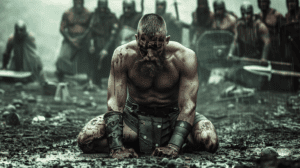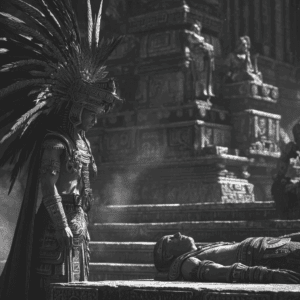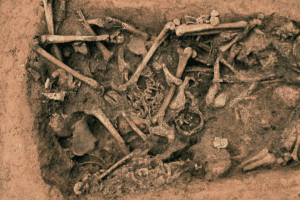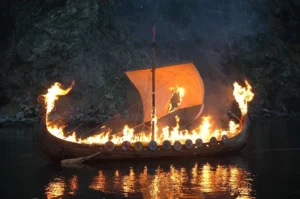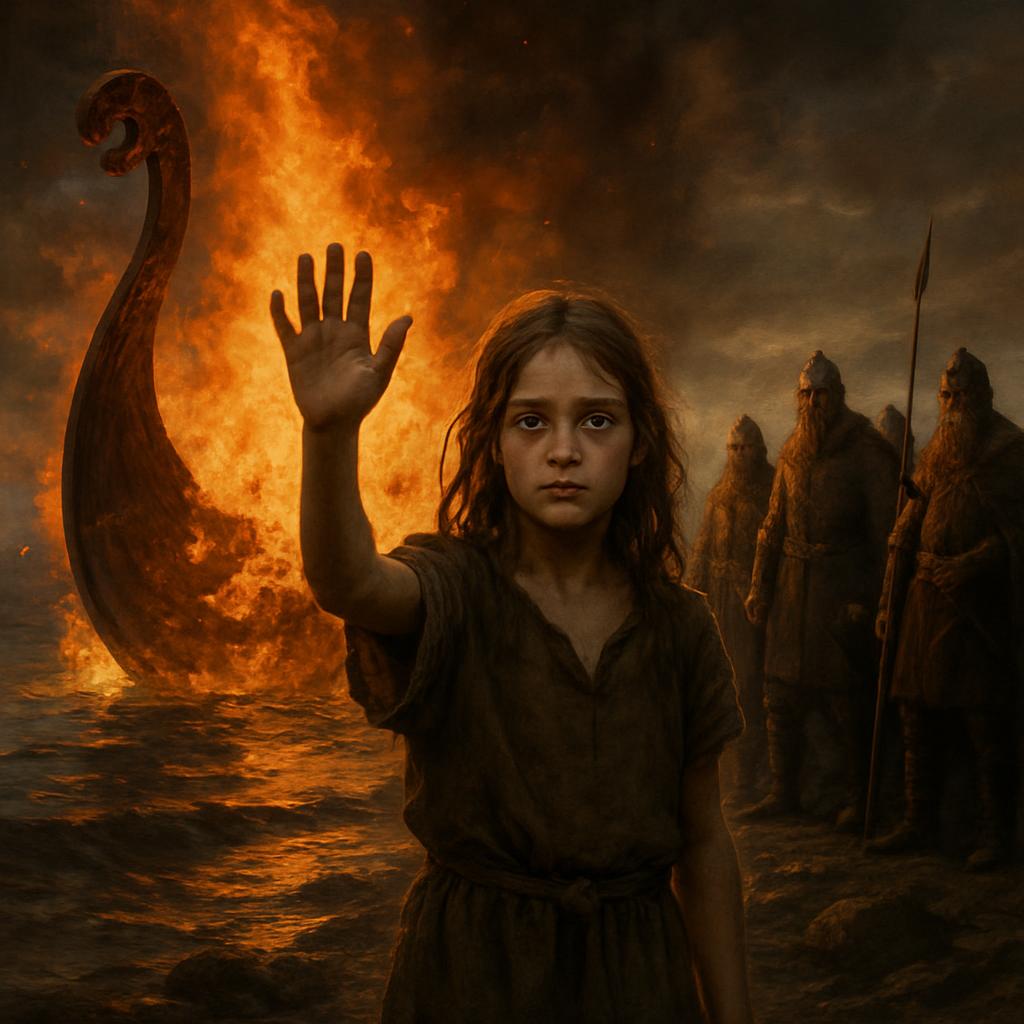
Volga River, A.D. 922
They asked for a volunteer, and she raised her hand, a small, petite, honourable slave girl. Ten days later, as part of ritual suicide, they would strangle and stab her on a burning ship while the whole village cheered them on.
The air smelled of pine resin and blood. A longship rested on a bed of sand beside the dark water, its hull propped upright like a waiting beast. Around it stood the Rus, Swedish Vikings who had sailed east decades before, following river routes deep into what is now Russia.
These were rugged, hard-worn men, true Vikings with no fear.
They came as traders and raiders, establishing settlements along the Volga and Dnieper, dealing in furs, slaves, and silver with the Islamic world to the south.
They brought their gods with them: Odin, Thor, and the promise of Valhalla.

Odin: Norse God of War, Wisdom, and Death
Odin was the one-eyed god of war, wisdom, and death — ruler of the slain.
He sent his Valkyries to gather warriors for Valhalla, his golden hall of endless battle and feast. Among the Rus’, even the act of trading — when won through danger and blood — could be seen as a kind of battle, and just as brave.
Valhalla was reserved for those who died by the sword — the warriors chosen by Odin — and though this chieftain was a trader by craft, his voyages were wars in all but name; he had fought for every coin and riverbank he claimed.
The beautiful afterlife was promised to all who met death with courage, to all who were counted among the brave.
Funerals Are Difficult For All – But This One Is Pure Horror
Their leader lay stretched in the centre of the ship, shrouded in rich fabrics as he had clearly earned them. His beard combed smooth, weapons at his side.
The chilling fact was:
He was not going alone.
The Witness: Ibn Fadlan and the Burning of the Rus’ Chieftain
The Arab diplomat Ahmad ibn Fadlan stood among the mourners, watching.
Sent north by the Abbasid Caliph of Baghdad on a mission to the Volga Bulgars—a Turkic people who had requested help building fortifications and learning Islamic law—he had arrived in a region where Vikings, Arabs, and local tribes converged to trade.
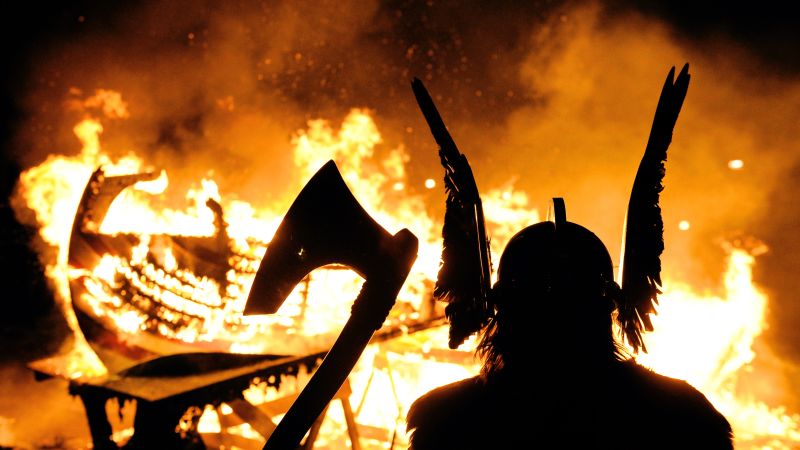
The First and Only Eyewitness to a Viking Funeral
Here, along these river routes where furs and slaves were exchanged for silver and silk, he found himself witness to something no other literate observer had ever recorded: a complete Viking ship funeral, from preparation to immolation.
His account, the Risāla, survives as the only eyewitness description of this ritual suicide. Every detail he recorded—dates, dialogue, the unbearable sequence of events—comes down to us nearly unfiltered across eleven centuries.
What he saw would haunt him forever.
The Funeral Ship: Where the Living Paid the Fare
When the chieftain died, his people mourned for ten days. The Rus believed death was a journey, and their leader would sail to an afterlife where warriors feasted and fought eternally.
But he could not arrive as a beggar. He needed his wealth, his weapons, his animals—and his servants.
They built the funeral ship and filled it with offerings: beer, bread, fruit, and fragrant herbs. They slaughtered a dog and laid it at the Chieftain’s feet. Two horses were killed and cut in half.
Why the horses were split, Ibn Fadlan never explained; perhaps to fit in the ship, perhaps for ritual, but it remains unclear.
The meat was placed aboard. Two cows followed. Swords, shields, and silver gleamed in the hull like frozen fire.
Then they asked the question that changes everything: “Who among you will die with him?”
A young slave girl stepped forward.
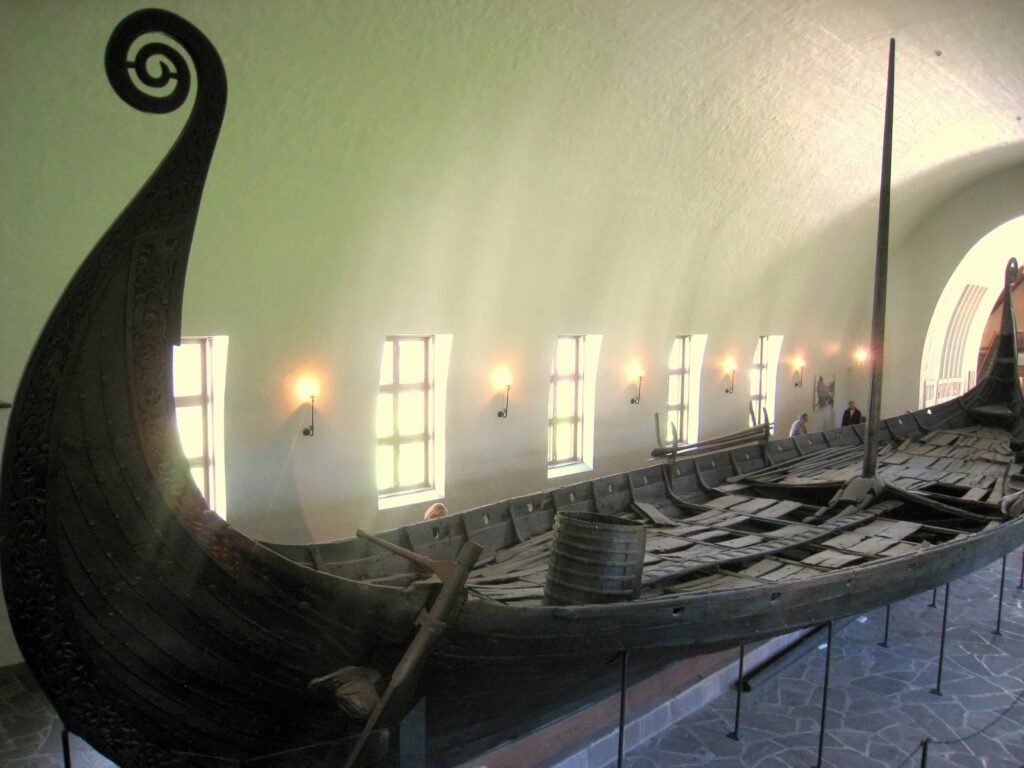
The Terrifying Choice That Wasn’t Really Hers
The Rus called her the chosen one. In their worldview, she had been given a tremendous honour—to serve her master in the afterlife, to be remembered in saga and song, to escape the grinding brutality of slave life for a glorious death.
They genuinely believed this. And perhaps, in the haze of religious fervour and communal pressure, the slave girl believed it too.
But in Reality, the Slave’s Life Was the First Death
But here is the psychology of it: she was a slave. The only choice more certain than death with honour was continued life without any honour or care at all.
She had no family to protect her, no wealth to buy her freedom, and no status to grant her refusal. When the community asked for a volunteer, the invisible architecture of power had already made the decision. Her stepping forward was not agency—it was the performance of agency, scripted by those who owned her.
For The First Time Ever, She Was Dressed In Finery And Celebrated
But only once in her short life.
For ten days, they gave her strong drink—mead thick as honey, beer that blurred the edges of the world. She was dressed in fine clothes. She was celebrated.
And she was sent to every tent in the camp, where men took her in turn. Each man whispered the same thing afterwards: “Tell your lord that I did this out of love for him.”
Ibn Fadlan’s language is careful here, but the meaning is clear. This was a ritualised assault, sanctified by religion, made palatable by intoxication.

The Slave Girls’ Song Echoed As She Was Assaulted
The girl sang as she moved between tents, her voice carrying across the camp. Some heard devotion. Ibn Fadlan, an outsider to these beliefs, saw something else: a young woman so drunk she could barely stand, her eyes “vacant as winter water,” performing the role assigned to her until the very end. The picture was harrowing.
The Angel of Death
On the final morning, drums beat slow and deep. Six men lifted the girl above a wooden doorframe three times, as is tradition. Each time, they asked what she saw.
The Slave Girl Saw Her Family In The Afterlife
Each time, drugged and delirious, she answered: “I see my father and mother.” Then: “I see all my dead relatives sitting.” Finally: “I see my master in paradise, and he calls me. Let me go to him.”
Whether she truly saw these visions or simply recited what was expected, we will never know.
The line between religious ecstasy and trauma-induced dissociation is often invisible.
They led her onto the ship. Waiting there was an old woman, the Rus called the Angel of Death. She was the specialist, the one who had done this before, who knew the prayers and the knife work.
The girl lay down beside her master’s body. She drank one final cup. She removed her silver bangles and handed them to the Angel of Death as a last farewell.
A Trance Like Sound Began
The warriors began striking their shields, a thunderous rhythm meant to drown out any sound she might make. The Angel of Death wound a cord around the girl’s throat. Two men pulled it tight from either side. And as the girl struggled for air, the old woman drove a broad dagger between her ribs, withdrew it, and stabbed again to complete the ritual suicide act.
Ibn Fadlan turned away. The sight was unbearable.
The Burning
The crowd roared as a naked man—the chieftain’s closest kinsman—approached the ship with a flaming torch. He walked backwards, one hand holding the fire behind him, the other covering his genitals in a gesture of modesty or ritual. He lit the pyre.
Flames consumed the hull. Pine pitch spat and sang. The resin they had poured over everything caught fast, sending black ribbons of smoke into the sky. The smell—burnt honey, scorched meat, hair, fabric—drifted down the river for miles.
Just One Hour Later, The Chieftain Was With Odin
Within an hour, everything was ash and twisted iron. They raised a mound over the place and carved a wooden post with runes: the chieftain’s name, perhaps, or a prayer to the gods who waited for him.
What the Ground Remembers
Archaeology confirms Ibn Fadlan’s account. Across Russia and Sweden, excavations have uncovered cremation mounds with the exact materials he described: ship rivets, sacrificed animals, human remains burned together, weapons melted by intense heat.
These were not isolated incidents. This was a cultural practice that was repeated across generations.
The Rus were not uniquely cruel. Cultures around the world have practised human sacrifice, sati, retainer sacrifice—different names for the same transaction. The powerful take the powerless with them into death, and religion makes it noble.
The Psychology of Obedience
What makes Ibn Fadlan’s account so chilling is not the violence itself but the willing participation of an entire community in something we now recognise as murder. But his account also tells us a lot about ancient death rituals.
No one questioned it. No one intervened. The girl’s suffering was transformed, through ritual, into something sacred.
This is how coercion works at its most sophisticated: it doesn’t need chains. It needs only belief, repetition, and a chorus of voices saying this is how it must be. The girl was drugged, assaulted, and killed—but everyone around her saw devotion, honour, and love. This is not unusual even today.
The men who assaulted her believed they honoured her master.
The Angel of Death, who killed her, was simply doing her duty. The crowd that cheered the flames thought they were witnessing a soul’s ascension. And perhaps the girl herself, in those final hazy days, believed she had chosen this.
That is the true horror: not that people can be forced to die, but that they can be made to want to die.
The Smoke Still Rises
The Volga River still flows where the Rus burned their dead as part of their ancient death rituals. The trade routes they travelled became the borders of nations. Their gods are now mythology. The slaves they bought and sold are footnotes in academic texts.
However, the dynamics of power Ibn Fadlan witnessed are not unusual in lifetimes long before ours, nor in today’s world.
Would You Shout “STOP” If You Were There?
Would we be the lone voice in the crowd shouting “Stop”? History suggests not. Most of us would join in, beating the drums and calling the smoke holy. This is the group consensus still at work in our world today.
Faith And Culture Still Influence Actions
That is what makes this account, nearly 1,100 years old, still worth reading. Not because the Rus were monsters, but because they were human. And because the things that allowed them to burn a girl alive—faith, culture, obedience, the fear of standing alone—are still with us, dressed in different clothes, speaking different languages, waiting for the next time someone asks: “Who will volunteer?”
Historical Note: Ahmad ibn Fadlan’s account survives in a single 13th-century manuscript compilation. The funeral took place in 922 CE along the Volga River, in territory controlled by the Volga Bulgars. The Rus he describes were likely Swedish Vikings who had settled in the region. Archaeological evidence from sites in Russia and Sweden confirms the practice of ship cremations with human and animal sacrifices.
If you loved this article, read about the skulls that were once filled with blood and later filled with wine here.

